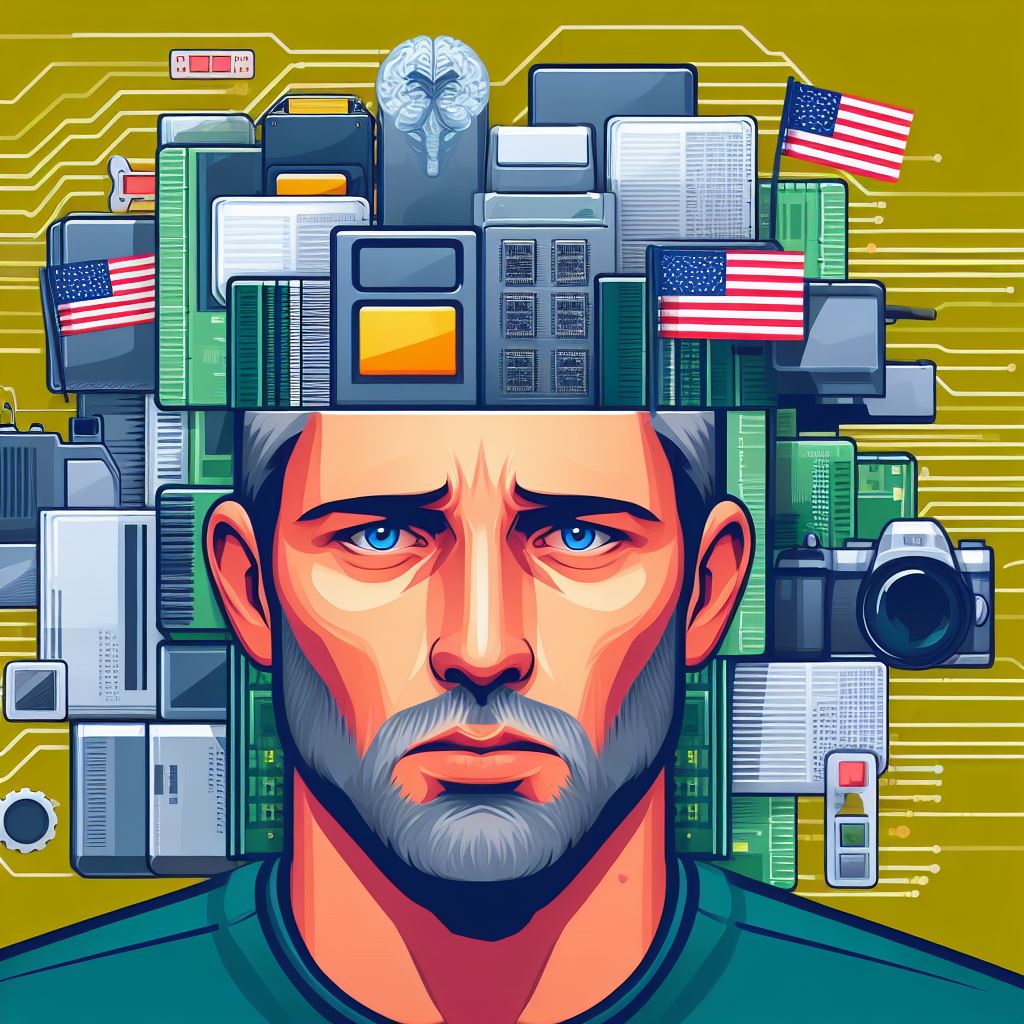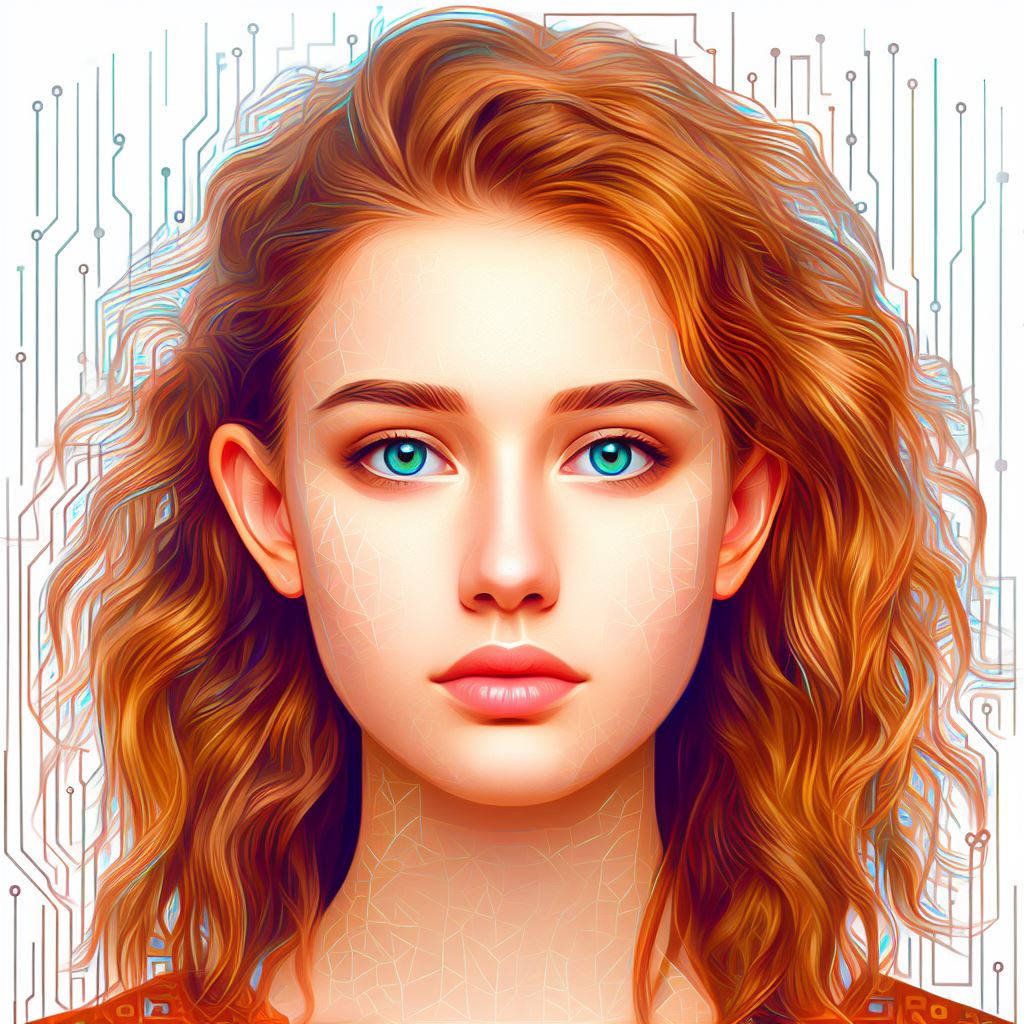Introduction
JavaFX is a software platform used for building desktop applications with a rich user interface.
Build desktop applications with a rich user interface using JavaFX as your software platform.
JavaFX is important for building desktop apps as it provides a modern and intuitive user experience.
It is important for building desktop apps as it provides a modern and intuitive user experience.
The main objectives of this blog post are to explain what JavaFX is, highlight its importance, and provide an overview of the blog’s content.
Getting Started with JavaFX
JavaFX is a powerful framework for building desktop applications with rich user interfaces.
Required software and tools for JavaFX development
- Java Development Kit (JDK): JavaFX applications require JDK 8 or later versions.
- Integrated Development Environment (IDE): Use an IDE such as Eclipse or IntelliJ IDEA.
- JavaFX Scene Builder: This visual layout tool helps design the application’s UI.
Setting up the development environment
- Download and install the latest version of JDK from the official Oracle website.
- Install your preferred IDE, ensuring it supports JavaFX development.
- Configure the IDE to use the installed JDK.
- Download and install JavaFX Scene Builder for your operating system.
- Configure the IDE to recognize the installed Scene Builder.
Now that we have an overview of JavaFX and the necessary tools, let’s dive deeper into each aspect.
Read: A Guide to Effective Java Exception Handling Techniques
JavaFX UI Components
In this section, we’ll explore JavaFX UI components for building desktop applications.
These components include buttons, labels, text fields, and many more.
Overview of JavaFX UI components for desktop apps
JavaFX specifically designs a rich set of UI components for building desktop applications.
Customize these user-friendly components easily to meet the application’s requirements.
- Buttons: Buttons are used to trigger actions when clicked. They can have text or images as their labels and can be customized with different styles and effects.
- Labels: Labels are used to display text or images on the screen. They are often used to provide information or describe other UI components.
- Text Fields: Text fields are used to allow users to input text or numerical data. They can be single-line or multi-line, and input validation can be applied to ensure data integrity.
- Checkboxes and Radio Buttons: Checkboxes and radio buttons are used to allow users to select options from a list. Checkboxes allow multiple selections, while radio buttons allow only one selection.
- ComboBoxes: ComboBoxes are used to represent a drop-down list of options from which users can select a single item.
- Sliders and Progress Bars: Sliders and progress bars are used to visually represent a range or progress. Sliders allow users to select a value within a specified range, while progress bars show the progress of a task.
How to create and customize JavaFX UI components
Creating and customizing JavaFX UI components is straightforward.
Instantiate and add each UI component’s class to the application’s scene graph for seamless integration.
Customize component behavior and appearance by setting properties and event handlers.
Tech Consulting Tailored to Your Coding Journey
Get expert guidance in coding with a personalized consultation. Receive unique, actionable insights delivered in 1-3 business days.
Get StartedFor example, to create a button, we can instantiate the Button class and set its text label using the setText() method.
We can also add event handlers to handle the button’s actions when clicked.
Customization options include setting the size, font, color, and style of the components.
JavaFX also provides CSS support for further customization by defining stylesheets.
Different layout options for arranging UI components
JavaFX provides several layout options for arranging UI components within a container.
These layout options include:
- FlowPane: Components are arranged in a flow-like manner, wrapping as needed.
- GridPane: Components are arranged in a grid, with rows and columns.
- BorderPane: Components are positioned in regions like top, bottom, left, right, and center.
- HBox and VBox: Components are arranged in a horizontal or vertical box.
- StackPane: Components are stacked on top of each other, allowing overlapping.
- AnchorPane: Components are positioned based on their distance from the edges of the container.
By using these layout options, developers can create flexible and responsive user interfaces that adapt to different screen sizes and orientations.
JavaFX offers a broad range of UI components for building desktop applications.
Easily create, customize, and arrange these components using various layout options.
We will dive deeper into JavaFX and explore how to handle user interactions and events.
Read: Troubleshooting Common Java Errors: A Developer’s Guide

Event Handling in JavaFX
Event handling in JavaFX is a crucial aspect of building interactive desktop applications.
Implementing event listeners and handlers for user interactions
To handle user interactions effectively, JavaFX provides event listeners and handlers for different types of events.
- Event Listeners: Event listeners are objects that wait for specific events to occur and trigger appropriate actions.
- Event Handlers: Event handlers are code segments that are executed when an event is triggered. They define the actions to be taken in response to an event.
Examples and demonstrations of event handling in a desktop app
Let’s explore some examples of event handling in JavaFX to understand how it works in practice.
Build Your Vision, Perfectly Tailored
Get a custom-built website or application that matches your vision and needs. Stand out from the crowd with a solution designed just for you—professional, scalable, and seamless.
Get StartedButton Click Event
We have a button in our desktop app; clicking it performs a specified action.
java
Button button = new Button("Click Me!");
button.setOnAction(e -> {
System.out.println("Button clicked!");
});In this example, we set an event handler for the button’s click event using the `setOnAction` method.
The button click triggers the event handler, which prints a message.
Key Press Event
We can also handle key press events in our desktop app. We aim to change text color with a specific key press.
java
text.setOnKeyPressed(e -> {
if (e.getCode() == KeyCode.ENTER) {
text.setFill(Color.RED);
}
});Here, we set an event handler for the `onKeyPressed` event of a text object.
Pressing the enter key changes the text color to red.
Mouse Hover Event
Handling mouse hover events can be useful when we want to provide additional information or visual cues to the user.
java
circle.setOnMouseEntered(e -> {
circle.setFill(Color.YELLOW);
});
circle.setOnMouseExited(e -> {
circle.setFill(Color.BLUE);
});In this example, we change the fill color of a circle when the mouse enters or exits its area.
It provides visual feedback to the user.
These are just a few examples of event handling in JavaFX.
The library offers numerous event types and ways to handle them.
Therefore, event handling is a fundamental aspect of building interactive desktop applications in JavaFX.
By implementing event listeners and handlers, developers can create highly responsive and user-friendly apps.
With JavaFX’s comprehensive event handling capabilities, developers have the tools to create engaging and dynamic desktop apps.
Optimize Your Profile, Get Noticed
Make your resume and LinkedIn stand out to employers with a profile that highlights your technical skills and project experience. Elevate your career with a polished and professional presence.
Get NoticedRead: Java vs Python: Which Language Should You Learn First?
JavaFX CSS Styling
JavaFX CSS styling plays a crucial role in creating visually appealing desktop applications.
It allows developers to customize the appearance of JavaFX UI components, giving them a more polished and professional look.
Importance of CSS in JavaFX for applying visual styles
Developers can easily apply visual styles to elements like buttons, labels, and containers using CSS, ensuring visual consistency and attractiveness in their applications.
Basic CSS syntax for styling JavaFX UI components
To style JavaFX UI components using CSS, developers need to follow a few basic syntax rules.
- Selection: Specify UI components in JavaFX by using selectors based on id, class, or type for applying CSS rules.
- Properties: Properties define the visual aspects of the selected component, such as color, size, font, and alignment.
- Values: Assign values to properties in JavaFX, defining the appearance of the selected component. Express them in units like pixels, percentages, or predefined keywords.”
Examples of applying CSS styles to desktop app components
Applying styles to buttons
css
.button {
-fx-background-color: #00bfff; /* change the background color to light blue */
-fx-text-fill: white; /* set text color to white */
-fx-font-weight: bold; /* make the text bold */
}Styling labels
css
.label {
-fx-font-size: 20px; /* increase font size to 20 pixels */
-fx-text-fill: #ff6347; /* change the text color to tomato */
-fx-font-family: "Arial"; /* set font family to Arial */
}Customizing containers
css
.pane {
-fx-background-color: #f0f8ff; /* set a light blue background color */
-fx-padding: 10px; /* add 10 pixels of padding around the container */
-fx-border-color: #00ced1; /* add a border color to the container */
-fx-border-width: 2px; /* set border width to 2 pixels */
}
Changing the appearance of checkboxes
css
.check-box {
-fx-font-size: 14px; /* increase font size to 14 pixels */
-fx-background-color: #7fff00; /* change the background color to chartreuse */
-fx-text-fill: #000080; /* set text color to navy */
}Use CSS to style JavaFX UI components—these examples showcase its styling capabilities.
Experimenting with different CSS properties and values allows developers to further enhance the visual appeal of their desktop applications.
JavaFX CSS styling is essential for creating visually appealing desktop applications.
It allows developers to customize the appearance of UI components, resulting in more polished and professional-looking apps.
By adhering to basic CSS syntax and employing suitable selectors, properties, and values, developers can effortlessly apply visual styles to components like buttons, labels, and containers.
Read: Crash Course: HTML, CSS, and JavaScript for Beginners
JavaFX Animation and Transitions
Animation is an essential aspect of creating engaging desktop applications using JavaFX.
With animation, you can bring your applications to life by adding movement and visual effects.
In JavaFX, manipulate the properties of various graphical elements to achieve animation.
These elements can include shapes, images, and text.
JavaFX provides a powerful animation API that allows you to create and control various types of animations.
How to create and control animations in JavaFX
In JavaFX, animations are created using the Animation class and its subclasses.
These subclasses include TranslateTransition, ScaleTransition, RotateTransition, and FadeTransition.
To create an animation, you first choose the desired animation subclass and specify the target object.
- You define the animation duration to determine the time it takes for the animation to complete.
- Next, you set the starting and ending values of the properties you want to animate.
- Finally, you add the animation to a
Sequential TransitionorParallel Transitionto control the execution order.
JavaFX provides methods to control animations, such as play, pause, stop, and set Rate for adjusting the animation speed.
Using transitions for enhancing user experience in desktop apps
Transitions are a type of animation in JavaFX that allow for smooth and gradual changes between different states.
Using transitions in desktop applications can greatly enhance the user experience.
They provide visual cues and feedback, making the interface more intuitive and engaging.
JavaFX offers several types of transitions, including FillTransition, StrokeTransition, PathTransition, and SequentialTransition.
FillTransitionallows you to smoothly change the fill color of a shape.StrokeTransitionenables you to animate the stroke color and width of a shape.PathTransitionanimates an object along a specified path.SequentialTransitioncombines multiple transitions to create complex animations.
Effectively use transitions to guide the user’s attention, convey information, and enhance the overall experience.
Animation and transitions play a vital role in creating interactive and visually appealing desktop applications with JavaFX.
With the provided animation API, you can easily create and control various types of animations to enhance the user experience.
By utilizing transitions, you can add smooth and gradual changes between different states, making your applications more intuitive and engaging.
JavaFX Graphics and Multimedia
In this section, we will explore the graphics and multimedia capabilities of JavaFX in building desktop applications.
JavaFX provides a robust set of tools and libraries for creating visually appealing user interfaces and incorporating multimedia content.
Overview of JavaFX graphics capabilities
JavaFX offers a wide range of features for creating rich graphics in desktop apps.
It provides a powerful scene graph model that allows developers to create and manipulate various shapes, such as rectangles, circles, and polygons.
- Scene graph model enables easy manipulation and animation of graphics elements.
- JavaFX supports various rendering effects, including drop shadows, blurs, and gradients.
- It also allows developers to define and apply custom styles and CSS to graphics elements.
- Integration with Java 2D API enables advanced rendering capabilities.
Incorporating images, shapes, and multimedia content in desktop apps
JavaFX makes it easy to incorporate images, shapes, and multimedia content into desktop applications, providing an immersive and interactive user experience.
Developers can:
- Load and display images in various formats, such as JPEG, PNG, and GIF.
- Manipulate and transform images, including scaling, rotating, and applying filters.
- Create dynamic animations by manipulating properties of shapes and multimedia elements.
- Integrate audio and video playback capabilities into desktop apps.
Examples and demonstrations of graphics and multimedia implementation
To demonstrate the graphics and multimedia capabilities of JavaFX, let’s explore some examples:
- Creating a simple game with animated sprites and interactive graphics.
- Designing a data visualization app with custom charts and graphs.
- Building a media player with support for video playback and audio visualization.
- Developing a photo editing tool with image manipulation features.
These examples showcase the versatility and flexibility of JavaFX in building visually appealing and interactive desktop applications.
Therefore, JavaFX provides a comprehensive set of tools and libraries for implementing graphics and multimedia content in desktop apps.
Its scene graph model, image manipulation capabilities, and multimedia integration make it a powerful platform for creating visually stunning applications.
By leveraging JavaFX’s graphics and multimedia features, developers can create immersive user experiences and build compelling desktop applications.
JavaFX Deployment
The deployment of JavaFX desktop apps involves considering various options to ensure smooth installation and distribution.
Understanding deployment options for JavaFX desktop apps
Java Web Start (JWS) is one deployment option that allows users to launch Java applications directly from a web browser.
Create an executable JAR file for easy distribution and execution on various platforms.
Executable JAR files package the Java application along with its dependencies, making it convenient for distribution.
Native packaging is another deployment option that allows developers to create platform-specific installers for their JavaFX apps.
Platform-specific installers ensure a seamless installation process and provide a native experience to users on different operating systems.
When choosing a deployment option, consider the target audience, platform compatibility, and ease of use for end-users.
Creating executable JAR files or platform-specific installers
To create an executable JAR file for a JavaFX app, use tools like Maven or Gradle to package the application.
Maven, a popular build automation tool, simplifies the process of creating a JAR file by managing dependencies.
Gradle, another build automation tool, offers flexibility and scalability in creating JAR files for JavaFX apps.
When creating a JAR file, specify the main class in the manifest file to determine the executed class upon launching the app.
Users can double-click on the JAR file to launch the JavaFX app without the need for any additional setup.
To create platform-specific installers, utilize tools like JavaFX Ant tasks or third-party libraries such as Install4j.
JavaFX Ant tasks provide an easy way to generate platform-specific installers for Windows, macOS, and Linux.
Install4j is a powerful commercial tool that simplifies the creation of installers for JavaFX apps across various platforms.
Regardless of the chosen approach, always test the generated JAR file or installer on different target platforms to ensure compatibility.
Tips and best practices for JavaFX app distribution and installation
- Ensure that the Java Runtime Environment (JRE) version required by your JavaFX app is readily available and accessible to users.
- Provide clear and concise installation instructions to guide users through the installation process.
- Test the installation process on various operating systems to ensure a smooth experience for end-users.
- Consider bundling necessary dependencies along with the JavaFX app to minimize the chances of compatibility issues.
- Regularly update and maintain your JavaFX app to incorporate bug fixes, security patches, and new features.
- Make use of version control systems to track changes and manage different releases of your JavaFX app.
- Collaborate with beta testers or early users to gather feedback and improve the overall user experience.
- Document known issues and workarounds to minimize user frustration and provide prompt support when required.
Therefore, understanding the various deployment options for JavaFX desktop apps is crucial for seamless installation and distribution.
Whether through executable JAR files or platform-specific installers, developers can ensure a native experience and ease of use for end-users.
By following best practices and considering factors such as platform compatibility and user accessibility, developers can successfully distribute and install JavaFX apps for a wide range of users.
Conclusion
In this blog post, we discussed the key points of using JavaFX for building desktop apps, which are:
Download the latest version of JDK from the official Oracle website and install it.
Install your preferred IDE and configure it for JavaFX development.
Download JavaFX Scene Builder for your operating system and install it.
Configure your IDE to recognize the installed JDK and Scene Builder.
Highly encourage exploring JavaFX for robust and feature-rich desktop applications.
We invite our readers to leave their valuable comments or questions to initiate a discussion on this topic.




